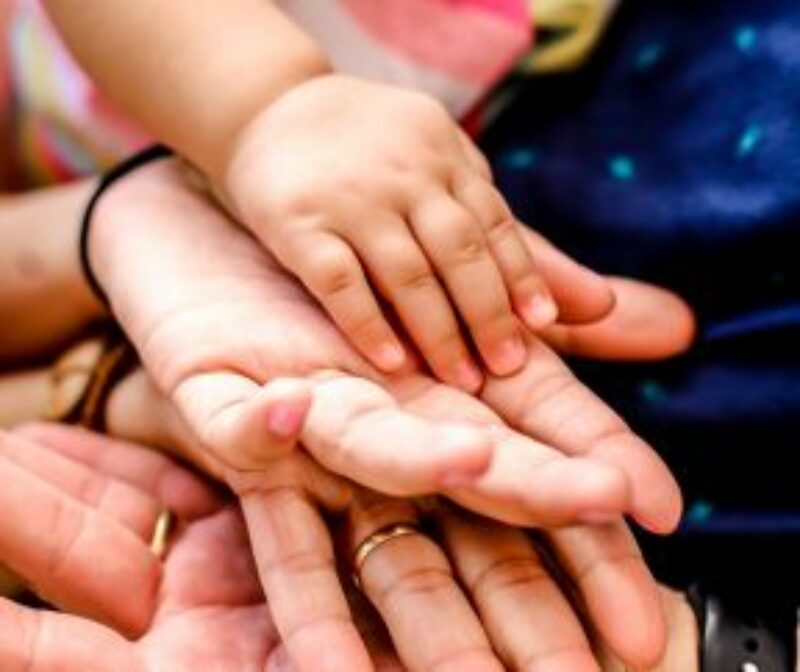Why should I care about attachment?
Have you ever had that feeling after meeting someone where you just click? While that’s an incredible feeling, you also know that no matter how connected you feel when you’re getting to know them, conflict is inevitable. The reality that we all come to know is that meaningful relationships are not accidental; they are the result of intentionality, awareness, love, empathy, forgiveness and so much more. Our relationships really matter—we need meaningful connections in order to thrive.
Learning a Common Language
While we click with some people, we don’t always magically feel connected to other people in our lives. Some people bring up some bad feelings in us. The way we connect with others can be a by-product of how we learned to connect in our earliest relationships. These are the relationships that nurtured us and left our earliest impressions of how we relate to others. These relationships shaped our understanding of how we expect others will show us love in the future.
The study of attachment began formally in the 1980s when a psychiatrist named John Bowlby started looking at how our relationships with early caregivers shape how we behave in relationships throughout our lives. He found that these early interactions with caregivers impacted the developing self beginning in infancy. Infants begin to form internal working systems based on how they experience their earliest caregivers. These caregivers leave imprints that infants come to apply to their relationships as they evolve and develop deeper levels of understanding in relationships.
The importance of understanding our attachment styles has become more and more prominent. Dr. Sue Johnson, who continued the work of John Bowlby in researching the theories of attachment, has written extensively on Emotionally Focused Therapy (EFT), which she developed around her findings. Her research on attachment has been released in her book, Hold Me Tight, and shows that we all long to find someone we can trust to say, “Hold me tight.” This isn’t true just in romantic relationships—it’s a basic biological need to feel secure and held.
During a baby’s first few years of life, new neural connections are forming at the rate of one million connections per second, meaning that the early years of a child’s life have a huge impact on the way their brain develops. The beauty in the findings of the attachment research is that early childhood isn’t the whole story—studies show that our brains are malleable and can learn and adapt as we grow and experience new relationships; our brains are constantly and quite literally being made new day after day. Before we get too far into the depths of attachment theory, let’s lay out a common language together. It’s important to remember that this is an oversimplification of a complex psychological concept. Remember to be gracious with yourself and others as you learn more about attachment and how it impacts the relationships in your life that matter the most.
Attachment as a Common Language
Attachment theory is one means of understanding what it means to be whole. It helps us better understand when we are functioning as cohesive selves that are able to acknowledge our own belovedness rather than dis-integrated selves that are functioning from a place of scarcity. We are all capable of living coherently, but it requires an awareness of self and our ideas about relationships. In The Reciprocating Self, Dr. Pamela King explains that infants develop “internal working model(s) of relationship” that are transferable to other relationships (Bowlby, 1980). These internal working models develop throughout our lives, but are highly influenced by our earliest relationships. You might see yourself in one of the following categories.
Vulnerable Self (demand)
- Needy
- Underdeveloped resources to self-soothe
- Nurturing caregiver consistently failed to meet their needs as a child
- Craves love and affection
- Seeks fulfillment through external relationships
Fragmented Self (demand)
- Fragile
- Does not have resources to self-soothe
- Needs were chronically unmet as a child
- Demanding of attention
- Prone to rage and/or addictive personality
Cohesive Self (secure)
- Integrated
- Has the ability to self-soothe
- Had a “good enough” caregiver meaning their needs were consistently met
- Attuned to their emotions
- Open to closeness and love
Protected Self (withdraw)
- Independent
- Perceives themselves to be the “ideal” partner
- Caregiver consistently left needs unmet
- Lack of emotional awareness
- Hides their needs from others
Fortress Self (withdraw)
- Hardened
- Comes across as in control
- Caregivers chronically failed to meet their needs
- Closed off towards others
- Needless/wantless
- Creating Security Out of Insecurity
Reading about our insecurities can raise feelings of inadequacy, but learning how we function when we’re not living as our cohesive selves opens us to creating new ways of being and sets us free to embrace our imperfections. The brain is continuously developing relationally, so our attachment styles are not set in stone. What is important, according to Bronfenbrenner, is that this reciprocating self is able to sustain the various roles in her life because she has formed an identity that is a “core self” (Erikson’s identity theory), which is important for stable identity formation in the early relationship with the primary caregiver. Healthy people are able to adapt to the various roles in their lives and not lose a sense of groundedness. They can be children (to their parents), employees, and spouses, but not become the expectations others have for them. The reciprocating self can fulfill the roles in their lives comfortably knowing that their core identity is rooted in more than their title.
In fact, it’s estimated that only 58% of the population have a secure attachment style. Your attachment style doesn’t preclude having good relationships. We just have to learn about who we are and how we affect the people we love (and how they affect us). The types of relationships and environments we find ourselves in can either reinforce or alter our internal working models about who we are. Gaining clarity helps us communicate better. Many fulfilling, lasting relationships involve at least one person having an insecure attachment style. So let’s start accepting these insecurities together and finding a way to relearn and establish a common language to foster deeper connections in our lives.
To explore more about The Reciprocating Self, you can purchase the text here.
Continue Exploring

Blog
Attachment Styles (Part 2): Will Love Always Feel This Hard?
Understand attachment through this case study.

Blog
Attachment Styles (Part 3): How Learning More About Yourself Can Help Your Relationships
Explore your attachment style with this exercise.

Blog
Created for Community (Part 1): How We Moved Away From our Village
Humans thrive within community, but our modern age encourages poor relational habits. Think about the nature of your relationships with the help of the practice in this post.
Subscribe to our newsletter and get our Thrive Practices for Spiritual Health PDF!
You Got It!
